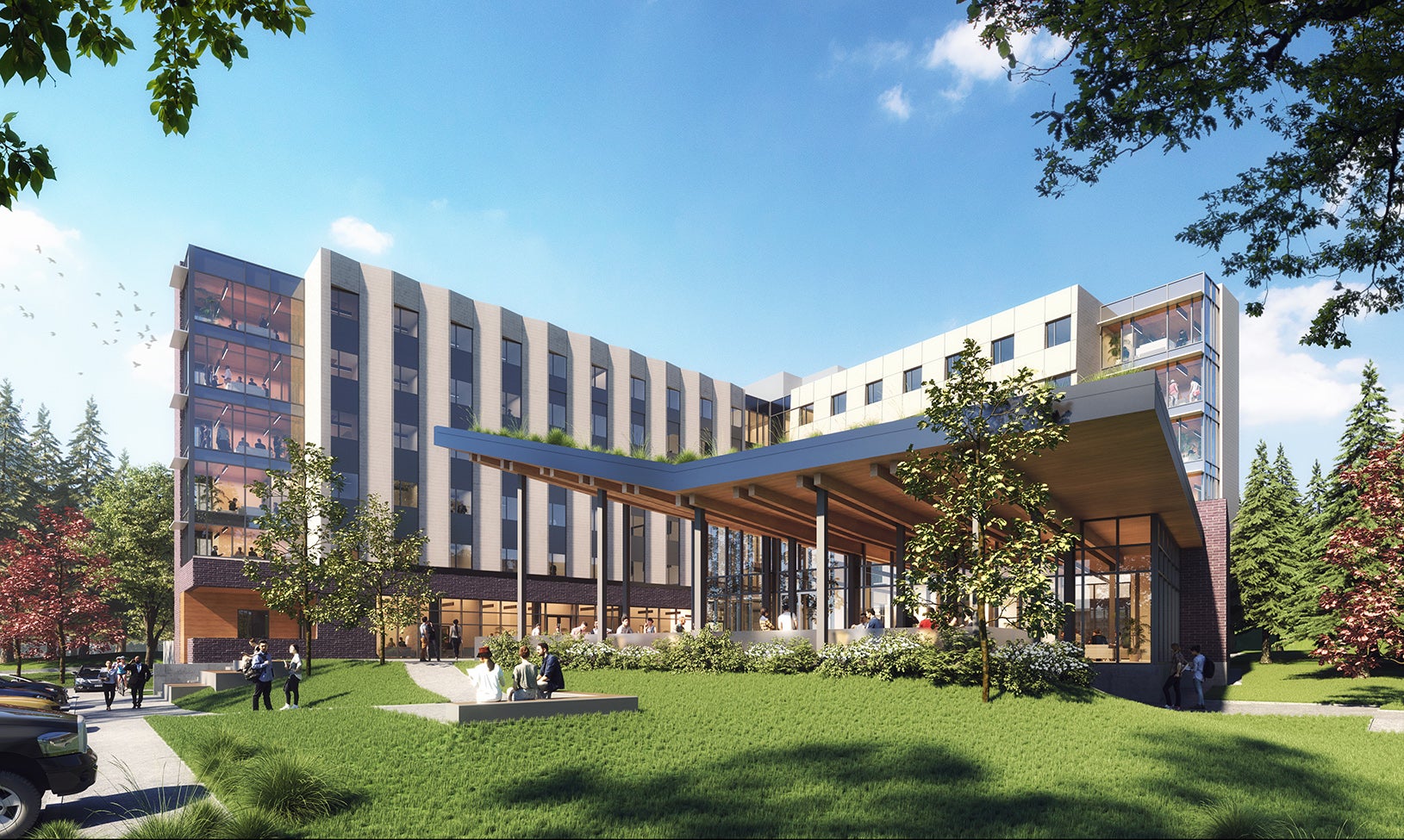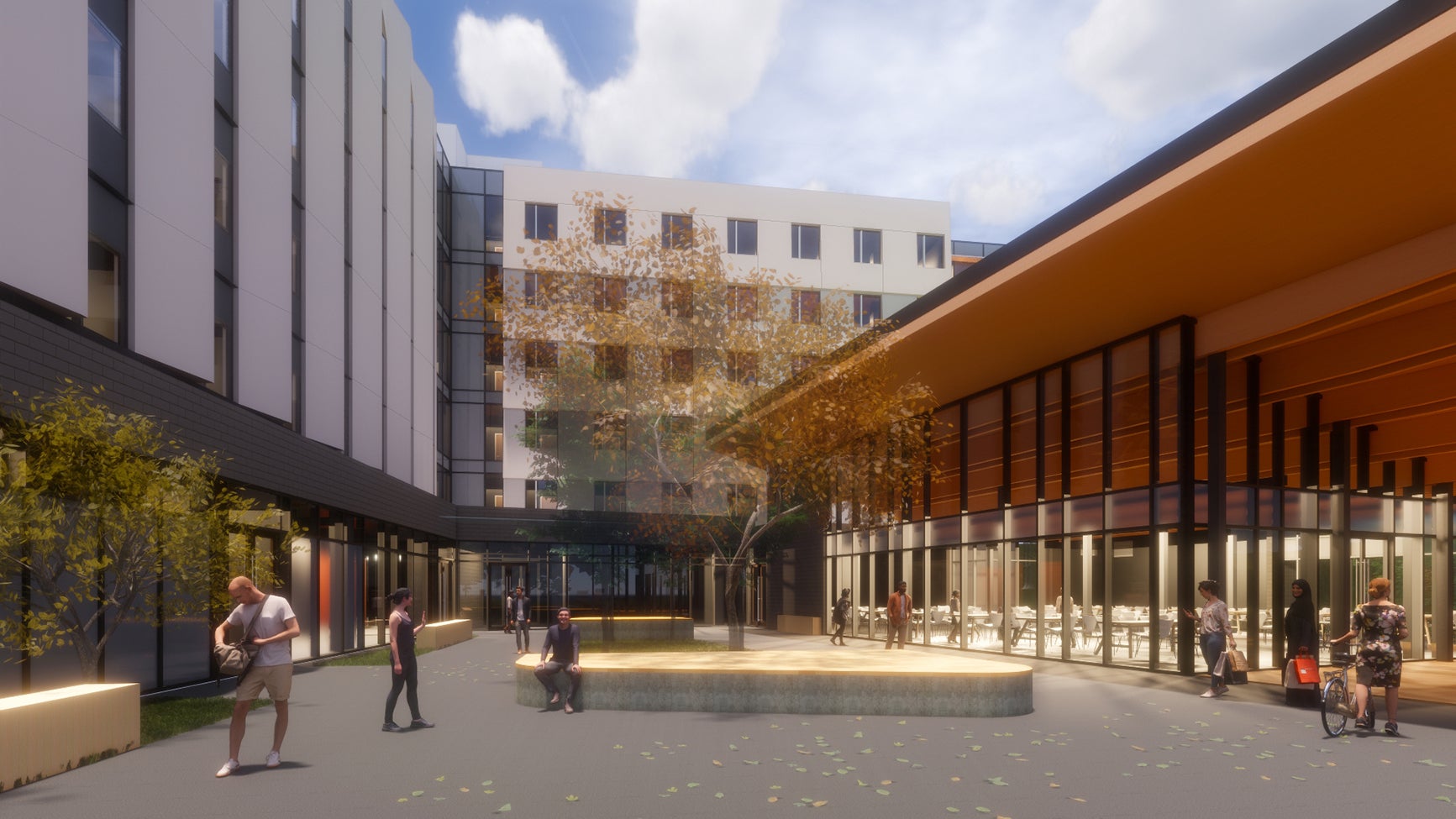
Affordability, Amenities and Sustainability: Targeted Strategies for Addressing the Student Housing Shortage
With the continued in-person return to campus, many students seek to experience a full campus life. Many colleges and universities provide this to their students via on-campus student housing, dining services, counselling, recreation and student centre buildings. However, across North America, institutions are facing unprecedented demand for student housing with long wait lists and not enough building stock to meet the current need. In some cases, students are being forced to make the difficult decision of where to attend school based on the affordability and availability of housing options in the area.
As many institutions undertake large capital projects aimed at increasing student housing stock, they must do so in a way that is prudent and viable for the long-term sustainability of the campus. In this article, we outline some of the key issues that students face today along with best practice research. From these, we highlight key design strategies that should be considered when undertaking any student housing project.

The Affordability Trade-Off
Much of what is driving students to look at on-campus options is the affordability of student housing as compared to alternative off-campus options. This conversation is broader than just the cost of rent, but taken in the totality of the time and expense associated with commuting, access to affordable healthy food options and the time spent searching for apartments each year. There is anecdotal evidence that students may be willing to sacrifice the size of a unit for the affordability, amenities, and access to the institution. In a recent piece in University Affairs, Solving the Student Housing Crisis, the University of British Columbia’s vice-president in charge of housing and community services shared that there were dozens on the wait list for UBC’s 140 square foot nano-suites due to low private accommodation availability and significant costs.
Access to Amenities: What Matters Most
Suite-style living? Fitness centers? Dining options? Community and study spaces? Different student bodies will prefer access to different amenities. Beyond campus amenities, local community amenities may be important as well. In urban settings, it’s often important to make sure that new residential facilities are connected to city transit, co-located with retail and dining, and integrated with local services to provide a more connected, sustainable campus. The program and even site selection for housing facilities must be informed by a robust understanding of the existing and desired amenities in the surrounding area, both on and off campus.
Sustainable Design: Reinforcing Personal Values
Today’s students are more eco-conscious than ever before; where historically they might not consider an institution’s ethos around sustainability to play a big role in their decision-making, today this is much different. According to the Princeton 2021 Hopes and Dreams survey, 75% of 2021 respondents (parents and students) said having information about a college's commitment to the environment would contribute to their decision to apply to or attend the school (vs 66% in 2020). Directly applicable to student housing, a recent student housing forecast (McBride, 2017) anticipated a notable change in student preferences by 2030, such that premium space and luxury amenities may be less appealing than a visible commitment to smart and sustainable space usage. Large parking lots may be converted to smaller spaces for ride-share services, alternative charging stations, and drone-delivery areas.
The benefits of utilizing sustainable building practices extend beyond attracting students to potentially influencing behaviour. A 2015 study found that students who live in LEED-certified student housing engage in more pro-environmental behaviour, including recycling, advocacy, and energy conservation than those living elsewhere. Although students choosing to live in such housing may have a predisposed interest in environmental sustainability, such housing may also help develop a stronger environmental identity among student residents (Watson et al., 2015). Institutions may find that offering sustainable housing options provide opportunities for students themselves to reinforce their personal commitment to sustainability.

Design Strategies that Support Well-being
Even though there are unique circumstances that are bringing affordability, amenities, and sustainability to the forefront of the student housing conversation right now, promoting student well-being remains critical as well, particularly in the post-pandemic return to campus. Each of these factors must be considered with other drivers around affordability, site availability and other existing facilities on campus. Working with our research team, we identified some of the strategies identified in research over the past few decades that may help support student well-being and achievement and promote safety.
Density Crowding: Low-rise and short-corridor university housing designs may improve social interaction and reduce psychological distress. High-rise buildings have been associated with greater social withdrawal. Long, double-loaded corridors contribute to perceptions of crowding and inhibit social interaction. Alternatively, rooms opening off a rectangle with a central shared bathroom or suites may offer a greater sense of community.
Fostering Community: Hybrid residential communities provide a balance of privacy and community for students of diverse backgrounds. In these communities, 10-12 bedrooms surround common living areas with a shared bathroom. Academic programs located in residence, known as Living-Learning Communities, may increase student retention rates and academic performance. Providing faculty living quarters to allow for a faculty-in-residence program may also create a sense of community and improve academic achievement.
Safety: Low-rise cluster buildings with fewer rooms per floor, as opposed to high-rise halls with long corridors, have shown significantly lower rates of crime and vandalism.
Health and Fitness: Co-locating housing and gym facilities may increase the frequency of student exercise and reduce student weight gain.
The Balancing Act
When an institution plans to build or expand student housing on their campus, they face a balancing act between affordability for the institution to build, maintain and operate the facility and students’ ability to afford the cost of room and board. This is a business case that needs to be reviewed carefully and holistically, looking at all revenue streams and the knock-on effects of bringing new students to campus 24/7. This assessment should include an evaluation of the appropriate amenities to provide and strongly consider prioritizing sustainable building practices. When executed successfully, attractive housing options can plan an important piece of a holistic campus experience.
References
- McBride, Y. (2017). Future of student housing: Meeting emerging student needs. On the Horizon, 25(3), 190–196.
- Watson, L., Johnson, C., Hegtvedt, K. A., & Parris, C. L. (2015). Living green: Examining sustainable dorms and identities. International Journal of Sustainability in Higher Education, 16(3), 310–326.




